Diagnostic mode of the AEG washing machine
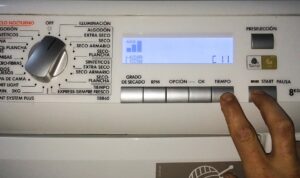 AEG is a premium technology. Even in the event of a breakdown, thanks to a modern electronic system, it is able to detect the fault itself. The diagnostic mode of the AEG washing machine can be launched by the consumer for unscheduled testing of the unit. Below we will look at how to do this correctly.
AEG is a premium technology. Even in the event of a breakdown, thanks to a modern electronic system, it is able to detect the fault itself. The diagnostic mode of the AEG washing machine can be launched by the consumer for unscheduled testing of the unit. Below we will look at how to do this correctly.
Self-diagnosis and its capabilities
The machine reports a defect using an alphanumeric code. The symbols that appear on the display are correlated with a potential malfunction using a special table. But AEG is not always able to run a service test; sometimes the user has to work with his hands. To do this you should:
- cancel the previous mode;
- hold down the Start/Pause and Exit keys, then turn on the washer by turning the selector to the right one notch;
- Press and hold the same keys again until the machine goes into test mode.
Attention! To exit the self-diagnosis program, you need to turn the machine off and on twice.
German technology allows you to view the last error code even during the cycle. To do this, 5 minutes after starting the washing machine, you need to press Start/Pause and Exit and hold them for two seconds until the numbers appear on the display. As soon as you release the buttons, the code will disappear, while the machine itself will work continuously.
After detecting and eliminating the malfunction, it is necessary to clear the equipment memory. We start the diagnostic mode and select program number 10. Press the Start/Pause and Exit buttons simultaneously and hold them in this position until all information is deleted.
To check the serviceability of the system, switch the programmer clockwise. If you have a model with a digital display, the error code will appear in just one second. In a situation where a malfunction occurs during the washing cycle, the machine locks the door and the indicators on the panel begin to flash.
Frequent errors and their causes
AEG washing machines, like any other equipment, have their weak points. Some elements fail more often. Let's look at the most common fault codes.
- One beep/flashing indicator or codes E10, C1—water intake is disrupted.
- Two signals (E20, C2) - the pump or drainage system may be clogged.
- Four signals and, accordingly, E40, C2 - breakdown of the device blocking the hatch, or damage to the wiring.
- Three signals (EF3, C3, F3) - the Aqua STOP system, which protects against water leakage, has activated.
- Eight (E80) - you started the programmer incorrectly, turn off the machine and select the mode again.
- Nine signals indicate a motor breakdown or laundry overload (E50, C9).
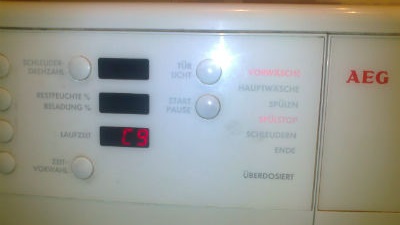
- Eleven - about insufficient or excessive voltage, problems with the power supply (codes EH0, EB0).
- Fifteen - about pump clogging, as well as excessive foam formation (EF0, EF1, EF2).
- A control board failure is indicated by the symbols T90 and CF.
- CE - there is no signal from the water distributor for two minutes.
What to do if the control panel of the machine does not respond to commands immediately after starting, and the diagnostic mode cannot be turned on? We need to find out why the power to the main module was turned off. Inspect the power button, surge protector, power source.
Measure the voltage at the source output: a value of 5 and 12 V is considered normal. If there is no voltage, the ROM, microcontroller, or integrated keys may be to blame.If it is present on all modular circuits, you will need to check the microcontroller and quartz oscillator again. Don't forget to call UBL. If you have the slightest doubt, it is still better to call a repair specialist to your home.
Interesting:
Reader comments
- Share your opinion - leave a comment

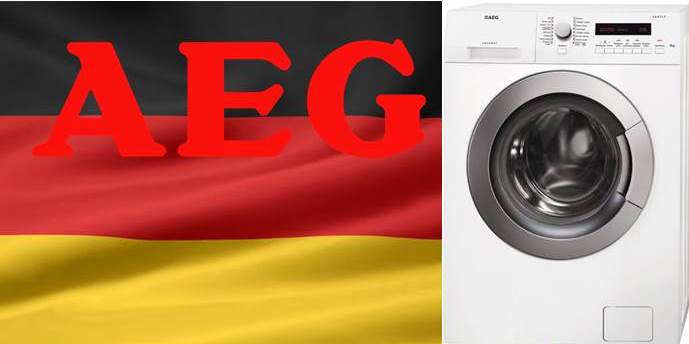

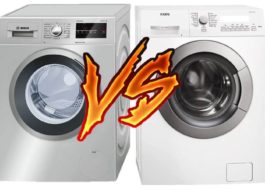


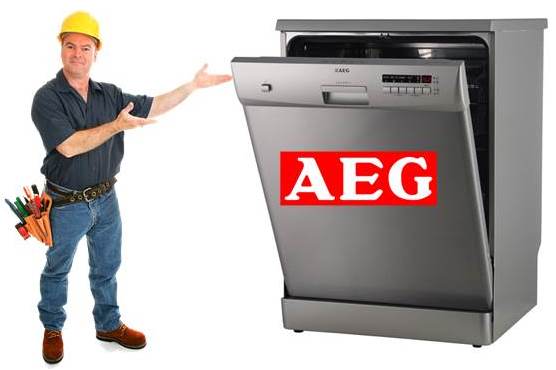














Add a comment